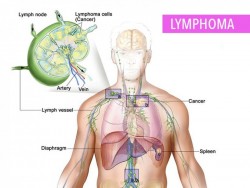
Nicotine is the primary substance in cigarettes that causes addiction, but most experts agree that it does not directly cause cancer.
Most research points to cigarette smoke, not nicotine, as being the primary contributor to cancer among smokers. However, although most experts agree that nicotine does not directly cause cancer, some research suggests that nicotine may lead to a type of DNA damage that increases the risk of cancer.
Research from 2015 reported in the Indian Journal of Medical and Paediatric Oncology suggests that nicotine may increase the risk of cancer because it might damage DNA, initiate cancer and cause it to progress faster, and interact with cancer-causing chemicals.
Research into the role of nicotine in cancer is ongoing. Many studies, however, do not differentiate between nicotine, tobacco, or smoking when they discuss cancer risk. This makes it difficult to determine which of them causes cancer.
Even if nicotine does cause or lead to cancer, the risks of developing cancer through the use of nicotine-only products are much lower than the risks from smoking.
Nicotine is addictive and is the primary reason most people smoke. However, almost every other nicotine-based product is safer than smoking. No nicotine replacement product is completely safe for all people, but some of the less harmful alternatives include:

Nicotine replacement therapy (NRT) refers to a group of treatments designed to help smokers quit. NRT is available in several forms, each of which delivers nicotine without smoke, tobacco, or other carcinogenic (cancer-causing) chemicals:
NRT poses some risks. In addition to nicotine's potential link to cancer, it is also a stimulant. This may make it unsuitable for some people with heart disease or certain heart disease risk factors to use.
However, most people who have a heart condition can use NRT. However, there is a small group of people who should not use NRT, such as those with severe arrhythmia, severe angina, or people who have recently had a heart attack. People should talk to their doctor for individual advice if they are in any doubt about using NRT.
Some people also use NRT as a means of consuming nicotine regularly, instead of for cutting down or quitting, and the long-term effects of NRT are not clear.
A 2010 study in the American Journal of Public Health concludes that the benefits of NRT far outweigh the risks. Researchers specifically state that increasing NRT use could save 40,000 lives per year by preventing heart disease and lung cancer.

Electronic cigarettes, or e-cigarettes, sometimes called vaporizers or vapes, all work by vaporizing nicotine. The amount of nicotine in each electronic cigarette varies; some even allow users to decide the amount of nicotine they use.
E-cigarettes have been the subject of dozens of safety studies in recent years, often producing conflicting results. A 2013 study found that amounts of nicotine vary with these products and that some may provide dangerously high, or even fatal, levels of nicotine.
Other research, including another 2013 study comparing several e-cigarette brands, found that they may contain toxic chemicals. When e-cigarettes do contain these chemicals, they are generally fewer in number and quantity than in traditional cigarettes.
Despite these risks, most studies agree that e-cigarettes are significantly safer than tobacco or smoking. A 2014 systematic review in the journal Therapeutic Advances in Drug Safety argues that smokers who switch to vaping can expect significant health benefits.
Smokeless tobaccos are chewed or put in the nose. They contain nicotine, as well as a range of other carcinogenic chemicals. According to the American Cancer Society, smokeless tobaccos are safer than cigarettes, but still have links to cancer.
Snus, sometimes called Swedish tobacco, is a moist powder form of tobacco. The user can suck on or chew the tobacco. Unlike chewing tobacco, people swallow it instead of spitting it out. According to the American Cancer Society, Snus may contain less nicotine than other types of moist tobacco types. However, because it is tobacco, it contains a variety of chemicals that may be carcinogenic.
A World Health Organization (WHO) analysis of previous research argues that snus is unlikely to cause oral or gastric cancer. As a result of this research, the WHO suggest that snus may be an important method of harm reduction.
However, not all research supports this claim. A 2013 case study reported on snus users in Iran who presented with oral cancer. The authors of that study argue that snus and other forms of smokeless tobacco significantly increase the risk of oral cancer. However, this risk appears to vary by region.
Overall the potential risks of snus are unclear.

Chewing tobacco, sometimes called dip, allows a user to chew on or suck tobacco. Some people hold it between their cheeks and gum while tissues in the mouth absorb the nicotine. People then spit it out.
However, the American Cancer Society note that while users consume roughly the same amount of nicotine as people who smoke cigarettes, they also take in lots of dangerous chemicals.
The Society state that there are strong correlations between chewing tobacco and the development of oral cancer, pancreatic cancer, and esophageal cancer, as well as gum disease and other mouth health problems.
Smokeless nicotine products that do not contain tobacco may offer a useful harm reduction strategy for many smokers, and also a way of reducing the side effects of quitting nicotine.
Smokeless nicotine products, such as NRT, provide the most significant benefit. Users should steadily reduce the amount of nicotine they use, or increase the time between each use until they are no longer regularly consuming nicotine and are not experiencing withdrawal or side effect symptoms.
Smokers who are unable or do not want to quit should still consider alternative forms of consuming nicotine. Though not wholly safe, e-cigarettes and vaping offer an experience similar to smoking, but with less exposure to harmful chemicals and an overall reduction in the risk of cancer.

Nicotine is a drug, and no drug can be completely safe — particularly at higher levels of consumption. People with heart disease or heart disease risk factors may be more vulnerable to the adverse effects of nicotine.
It is smoking and the many chemicals it exposes a person to, not nicotine itself, which presents the highest risk. Switching to a nicotine-only product does not remove all likelihood, but it greatly reduces the risk of cancer. People interested in trying these products can consider NRT or vaping, but not smokeless tobacco, as safer alternatives.
 What Happens When You Quit Smoking – A Timeline
What Happens When You Quit Smoking – A TimelineEvery year more than 7 million people die as a result o...
 Types Of Yoga, Which One Is Best For You?
Types Of Yoga, Which One Is Best For You?There are two types of people in the world - those who ...
 10 Amazing Health Benefits Of Apricot Juice
10 Amazing Health Benefits Of Apricot JuiceOriginally from China, the use of apricots began almost...
 This Honey, Lemon And Cinnamon Drink Will Help You Lose Pounds In A Week
This Honey, Lemon And Cinnamon Drink Will Help You Lose Pounds In A WeekThe most effective way to lose weight is to do aerobic ...
 Cheap & Healthy Shopping List for Students
Cheap & Healthy Shopping List for StudentsCheap & Healthy Shopping List for StudentsStaying o...
 What You Need To Know About Lymphoma
What You Need To Know About LymphomaLymphoma is a cancer of the lymphatic system. It affect...
 This Honey, Lemon And Cinnamon Drink Will Help You Lose Pounds In A Week
This Honey, Lemon And Cinnamon Drink Will Help You Lose Pounds In A WeekThe most effective way to lose weight is to do aerobic ...
 Colon Cancer: Could Exercise Halt Tumor Growth?
Colon Cancer: Could Exercise Halt Tumor Growth?New research published in the Journal of Physiology sug...